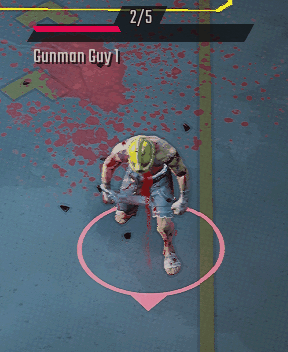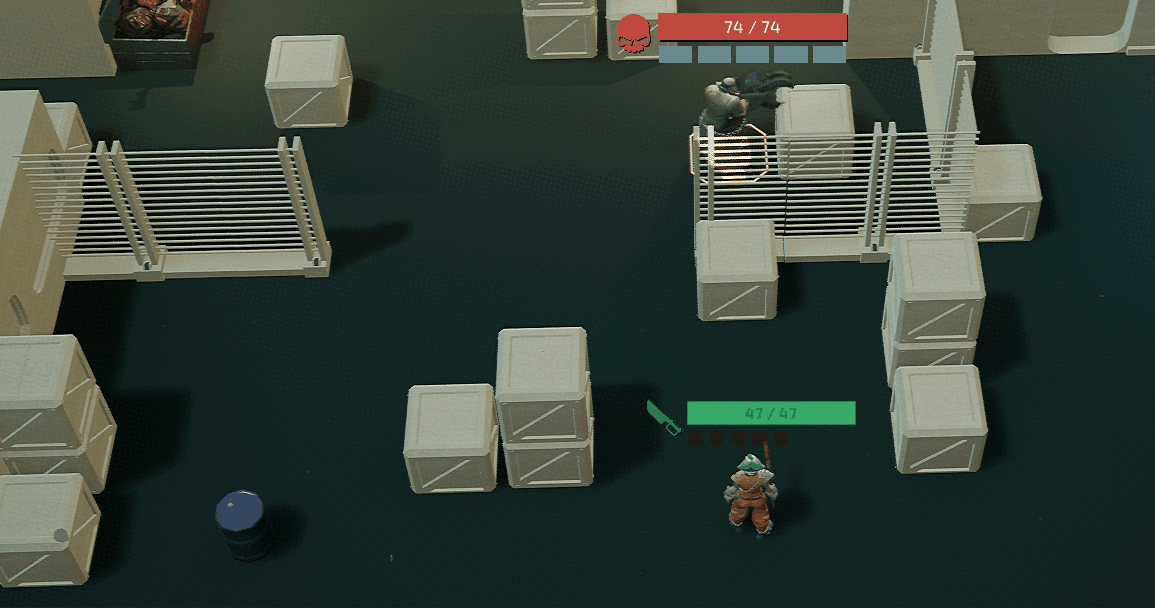
Unannounced Project
About
At the very beginning of my employment at Palindrome Interactive they had just green lit a new project which I got to be a part of from what was essentially day one.
It was a grand strategy game that combined the intense and calculated turn-based combat with a living and breathing overworld that was constantly changing.

Main Role: Game Design
Team Size: 20+ Developers
Time: ~2 years
Engine: Unreal Engine
Platform: PC
Genre: Turn-based Combat, Grand Strategy, Management
Combat
My primary role was to design and implement content for the combat part of the game. This included a lot of abilities, items and AI behaviors in a turn- and grid based combat.

Combat in this unannounced title went through a number of iterations throughout the years that were changed for different reasons before we eventually arrived at the version we were happy with.
The first iteration was a common ordinary hit-chance based combat. Depending on weapon, type of attack, distance and terrain the likelihood of a successful hit would go up or down. One big advantage with this system is that most players already sort of understand them since they are common in other popular games in the genre.
On the contrary there are also some issues we were not big fans of. First and most noticeable is the fact that unless the player is standing right next to an enemy there's always a chance the attack will miss. This felt really bad, like the game is punishing you for not necessarily doing anything wrong, just being unlucky.
There's also a lot of complexity in conveying all information to the player. Depending on all of the previously mentioned attributes
Dice roll
Another approach we decided to stick with for a while was a dice rolling one similar to many table top RPG's where you first roll for hit and then damage. While this works quite well for those it did not feel right in our game for a number of reasons and probably ended up being our least favorite version.
First and foremost it didn't feel like it fit the game very well, but it was also difficult to visualize and represent. The player were doing a lot of actions each combat and we wanted those actions to be bloody, goory and visual. Rolling a bunch of dies in between all of this just felt off.
This also didn't necessarily fix the issue where players had a super high chance to succeed with something but still failed. So we decided to move away from it.
Real time combat
I can't remember exactly at what time in the order of iteration we tried this, but we did try going real time as well. Where units had a range at which they'd notice the player and then player could use that information to strategically approach and engage groups of enemies at a time. Working their way throughout the encounter as effectively as they could.
What eventually lead to it's downfall was the fact that it just wasn't as much fun and thought provoking as we would've wanted combat to be. As we weren't making an RTS the combats were still rather small and short, and no matter how much micro you did it didn't feel great. So we went back to turn based.
No inherent miss chance
For the third and what ended up being our final iteration we removed the chance of missing entirely. As long as the player is in range and has line of sight to the target the attack will hit. Covers reduced damage instead of adding a chance it would be completely avoided. This felt a lot better than the two previous systems, although it did reenforce another issue where damage went from being royalty to being the king.
Without a reason to build or position to improve hit chance the only thing you really cared about was dealing as much damage as possible which made combat feel single file. So we came up with a staggering system. This was a system where if a unit achieved X number of stagger they were stunned for a while and couldn't act.
Different attack did different amounts of damage vs staggar. And usually staggering the opponent was easier than killing it. So to control the battlefield and avoid suffering casualties the player had to find a balance between staggering and killing enemies. This is where we really felt like the game hit home.
We still kept evasion as a concept, but that was something the player had to specifically go for through gear and action. Not something that was inherently part of each attack.
